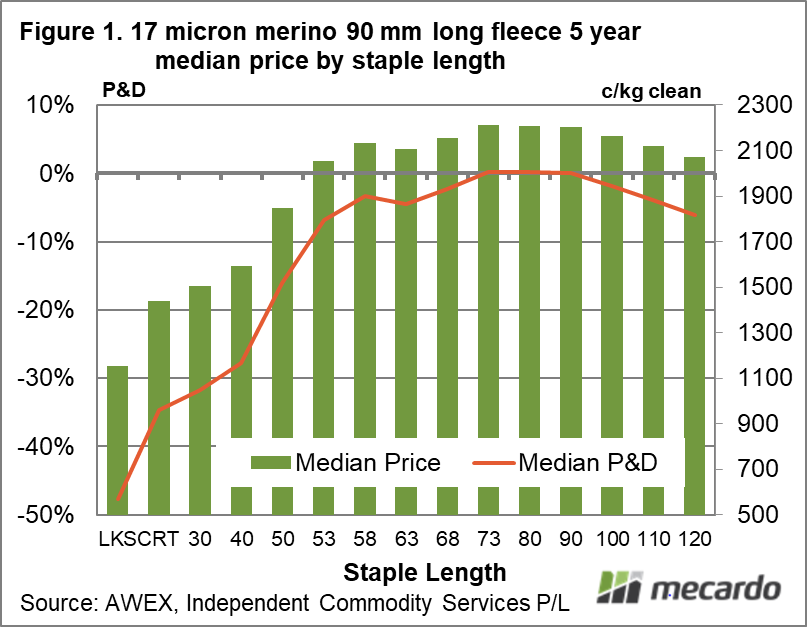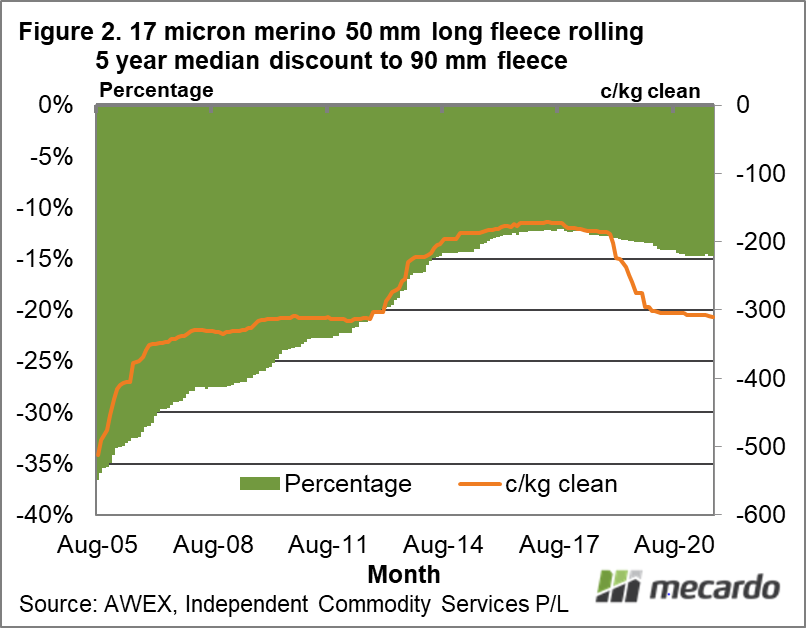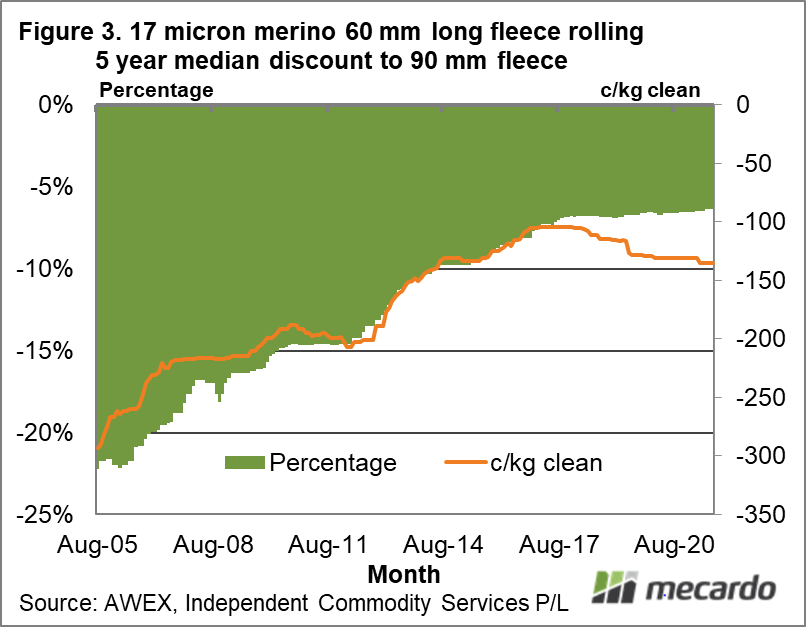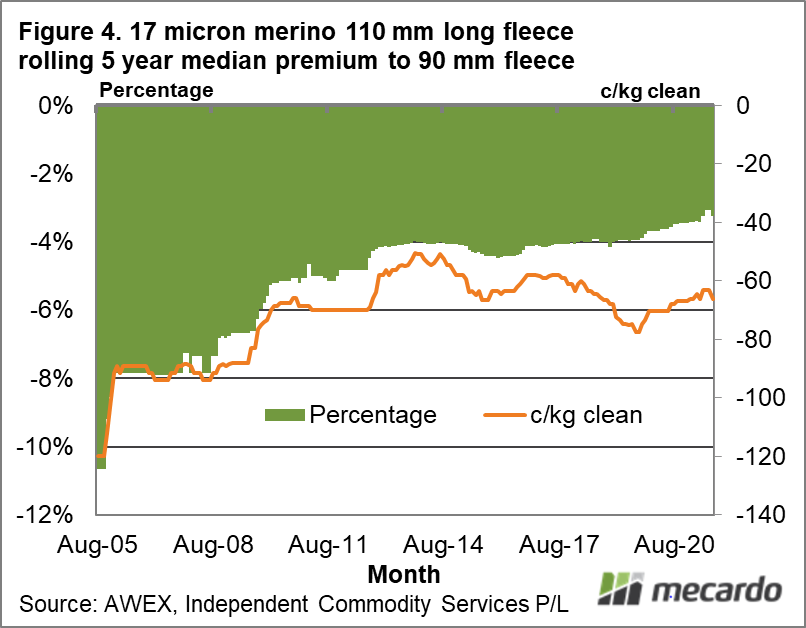Last week Mecardo looked at staple strength and its effect on price for 17 micron fleece. In processing terms the closely related wool characteristics to staple strength is staple length, its “pigeon pair” if you like. With this in mind this article takes a look at the effect of length on the price of 17 micron fleece.
In March 2021, Mecardo showed how staple strength and length were linked in terms of processing, and how the value of each characteristic was comparable when viewed via the TEAM formula (view article here). What does this mean at the farm gate? Basically when discounts for low staple strength are small so are discounts for short staple length, subject to the occasional variation in supply caused by seasonal conditions.
Figure 1 shows five year median prices (in bars referring to the right hand scale) for 17 micron fleece across a range of lengths from 30 to 120 mm, with locks and crutchings added for comparison. The prices are converted to premiums and discounts relative to the 90 mm staple length (line referring to the left hand scale) in order to show the effect of length in percentage terms. While prices peak around 70-90 mm staple length, there is little variation in price due to staple length until the length falls below 58 mm.
In Figure 2 the rolling five year median discount for 50 mm length 17 micron fleece is shown in both clean cents per kg terms (line) and percentage terms (bars) from 2005 onwards. As with the staple strength discounts shown last week, the discounts for short staple length shrink from 2005 onwards. In percentage terms the 50 mm discounts stabilised around 2017, before widening again slightly as apparel fibre prices turned downwards in 2018-19 with COVID adding and extra leg to the downturn in 2020.
It is a similar story for the 60 mm length discount, shown in Figure 3. While the discounts have remained around 6-7% since 2017, the absolute discounts have widened slightly from 100 to 135 cents. Figure 4 looks at a longer length (110 mm). Its shows the discount to narrow through to around 2014, steadying around 3-4% (50-80 cents clean) since then.
What does it mean?
The interaction between staple length and strength in processing means that these two wool characteristics are closely related in terms of value. Small discounts for one characteristic will generally means small discounts for the other characteristic, all other specifications being equal. A wide range of staple lengths are accepted by the market and paid close to full price for 17 micron fleece. There is a wide tolerance of staple length, with around 60 mm the critical level where discounts start to increase.
Have any questions or comments?
Key Points
- Staple length has to fall below 60 mm before discounts for staple length start to widen substantially for 17 micron fleece.
- Like discounts for low staple strength, discounts for low staple length (and over length) are much smaller now than 15 years ago.
- If there is a critical length for 17 micron fleece it is around 60 mm.
Click on figure to expand
Click on figure to expand
Click on figure to expand
Data sources: AWEX, CSIRO, ICS
















